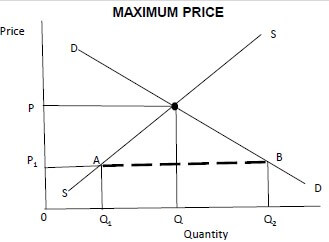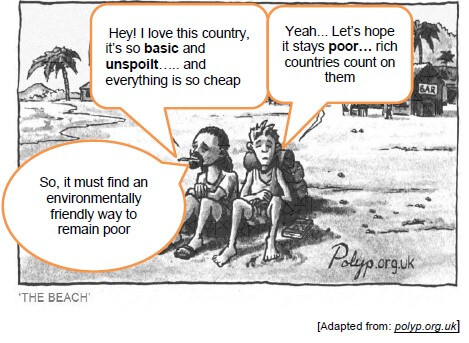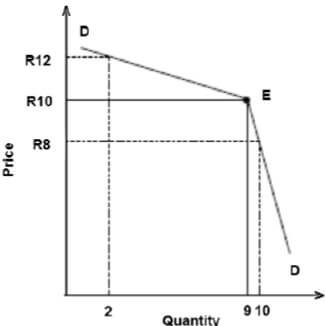ECONOMICS PAPER 2 GRADE 12 QUESTIONS - NSC PAST PAPERS AND MEMOS SEPTEMBER 2016
Share via Whatsapp Join our WhatsApp Group Join our Telegram GroupECONOMICS
PAPER TWO (P2)
GRADE 12
NSC PAST PAPERS AND MEMOS
SEPTEMBER 2016
INSTRUCTIONS AND INFORMATION
- Answer FOUR questions as follows:
SECTION A: COMPULSORY
SECTION B: Answer any TWO of the three questions.
SECTION C: Answer ONE of the two questions. - Answer only the required number of questions. Answers in excess of the required number will NOT be marked.
- Answer the questions in full sentences and the format, content and the context of your responses must comply with the cognitive requirements of the questions.
- Number the answers correctly according to the numbering system used in this question paper.
- Write the question number above each answer.
- Read ALL the questions carefully.
- Start EACH question on a NEW page.
- Leave 2–3 lines between subsections of questions.
- Use only black or blue ink.
- You may use a non-programmable pocket calculator.
- Write neatly and legibly.
QUESTIONS
SECTION A (COMPULSORY)
QUESTION 1 30 MARKS – 15 MINUTES
1.1 Various options are provided as possible answers to the following questions. Choose the correct answer and write only the letter (A to C) next to the question number (1.1.1 to 1.1.8) in the ANSWER BOOK, for example 1.1.9 C.
1.1.1 Equilibrium price of a commodity occurs when …
- market supply of a commodity is more than market demand.
- quantity demanded is equal to quantity supplied.
- marginal cost is greater than marginal revenue.
1.1.2 A cause for imperfect competition is …
- freedom of entry.
- advertising.
- selling identical products.
1.1.3 Social benefits exceeding private benefits is a feature of … goods.
- public
- demerit
- primary
1.1.4 Tourism has the biggest impact on the … industry.
- manufacturing
- construction
- service
1.1.5 A type of inflation that excludes commodities with volatile prices is known as …
- stagflation.
- deflation.
- core-inflation.
1.1.6 Monopolistic competitive markets make … in the short run only.
- economic profit
- normal profit
- economic loss
1.1.7 An increase in the price of petrol has … influence on tourism.
- a positive
- a negative
- no
1.1.8 Sewerage dumping can be cited as an example of … pollution.
- water
- land
- air (8 x 2) (16)
1.2 Choose a description in COLUMN B that matches an item in COLUMN A. Write only the letter (A to I) next to the question number (1.2.1 to 1.2.8) in the ANSWER BOOK, for example 1.2.9 J.
COLUMN A | COLUMN B |
1.2.1 Externality | A measure of the changes in prices of all final goods and services produced in a particular year |
1.2.2 Profit maximisation | B introduce waste matter into the environment |
1.2.3 Competition Tribunal | C foreigners visiting South Africa |
1.2.4 SABC | D activities of tourists who visit art galleries, museums, and also attend festivals |
1.2.5 All inclusive inflation | E average costs of business are greater than market price |
1.2.6 Inbound tourism | F occurs where marginal costs intersect with marginal revenue |
1.2.7 Pollution | G costs or benefits that affect a party that was not involved in an economic activity |
1.2.8 Cultural tourism | H entry is restricted through licensing |
I authorise or prohibit large mergers (8 x 1) (8) |
1.3 Give ONE term for each of the following descriptions. Write only the term next to the question number (1.3.1 to 1.3.6) in the ANSWER BOOK.
1.3.1 Natural resources that can be replaced or regenerated
1.3.2 South Africans travelling within South Africa
1.3.3 A continuous fall in the general price level
1.3.4 A situation where resources cannot be relocated to make one person/group better off without making another person/group worse off
1.3.5 A seller that has enough market power to influence the price of a product
1.3.6 Products that are exactly the same in type, quality and appearance (6 x 1) (6)
TOTAL SECTION A: 30
SECTION B
Answer any TWO of the three questions from this section in the ANSWER BOOK. QUESTION 2: MICROECONOMICS 40 MARKS – 20 MINUTES 2.1 Answer the following questions.
2.1.1 List any TWO types of subsidies on goods. (2 x 1) (2)
2.1.2 What is the implication of a horizontal demand curve of an individual firm in a perfect market on the price? (1 x 2) (2)
2.2 Study the graph below and answer questions that follow. 
2.2.1 Identify the maximum price from the graph. (1)
2.2.2 Which quantity will be supplied when the maximum price is enforced? (1)
2.2.3 Which role does the government play in redistribution of wealth? (4)
2.2.4 How will the maximum price affect the economy? (4)
2.3 Study the extract below and answer questions that follow.
COST BENEFIT ANALYSIS OF ENERGY EFFICIENCY IN LOW COST HOUSING The CBA was conducted by the Energy and Development Research Centre (EDRC), as part of a larger study on environmentally sound energy efficient low cost housing. [Adapted from: energy and development centre website] |
2.3.1 Identify a cost and a benefit from the above extract. (2 x 1) (2)
2.3.2 Explain the concept cost benefit analysis. (2)
2.3.3 Give ONE purpose of a CBA. (2)
2.3.4 How is CBA related to market failure? (4)
2.4 Explain in detail TWO forms of collusion. (2 x 4) (8)
2.5 How successful are the market forces in influencing monopolies? (8)
[40]
QUESTION 3: CONTEMPORARY ECONOMIC ISSUES 40 MARKS – 25 MINUTES
3.1 Answer the following questions.
3.1.1 List TWO reasons for growth in the tourism sector. (2 x 1) (2) 3.1.2 How will key inputs contribute to cost push inflation? (1 x 2) (2)
3.2 Study the table below and answer the questions that follow.
Year | Average Price of a Basket of Goods | CPI | Inflation Rate |
2010 | R200 | 100 | ----- |
2011 | R214,29 | 107,1 | 7,1 |
2012 | R223,41 | 111,7 | 4,3 |
2013 | R234,58 | 117,3 | 5,0 |
2014 | R248,10 | A | 6,8 |
[Source: Stats SA 2015]
3.2.1 Which year is considered the base year from the table? (1)
3.2.2 What tendency did the inflation rate show over the last three years? (1)
3.2.3 Explain the concept CPI. (2)
3.2.4 Why do people lose confidence in their currency during hyperinflation? (2)
3.2.5 Calculate the CPI as indicated by the letter A. Show all calculations. (4)
3.3 Study the extract below and answer the questions that follow.
South African Tourism (SAT) Business tourism has increased, especially since the establishment of the country’s first South African National Convention Bureau (SANCB) as a business unit under South Africa Tourism (SAT). Given the strong growth potential in Africa, SAT was allocated R300 million to expand its marketing in Africa. [Adapted from: tourism- www.gov.za] |
3.3.1 Identify TWO campaigns from the extract that are used to promote domestic tourism. (2 x 1) (2)
3.3.2 Explain the concept tourism. (2)
3.3.3 What marketing strategy can South Africa use to improve tourism? (2)
3.3.4 How will tourism benefit the business sector in your local community? (4)
3.4 Explain any TWO causes of demand pull inflation. (2 x 4) (8)
3.5 How can indigenous knowledge systems be used to increase tourism in South Africa? (4 x 2) (8)
[40]
QUESTION 4: MICROECONOMICS AND CONTEMPORARY ECONOMICS ISSUES 40 MARKS – 20 MINUTES
4.1 Answer the following questions.
4.1.1 List any TWO characteristics of monopolistic competition. (2 x 1) (2)
4.1.2 Why is it important for tourist policies to promote and encourage eco-friendly tourism? (2)
4.2 Study the graph below and answer the questions that follow. 
4.2.1 Identify the part that refers to ecotourism in the cartoon. (2)
4.2.2 Why is the growth in tourism industry problematic to the environment? (2)
4.2.3 How will tourists benefit from a poor country as holiday destination? (2)
4.2.4 How can South Africa as a developing country benefit more from international tourism? (4)
4.3 Study the graph below and answer the questions that follow. 
4.3.1 Identify the market structure represented by the above graph. (1)
4.3.2 At what price will the firm sell its products? (1)
4.3.3 Briefly explain with reason the shape of the above demand curve. (4)
4.3.4 How do firms successfully use product differentiation as a form of non-price competition? (4)
4.4 Discuss any TWO consequences of inflation. (2 x 4) (8)
4.5 How does the government discourage and encourage externalities? (8)
[40]
TOTAL SECTION B: 80
SECTION C
Answer any ONE of the two questions from this section in the ANSWER BOOK.
Your answer will be assessed as follows:
STRUCTURE OF THE ESSAY | MARK ALLOCATION |
Introduction
| Max. 2 |
Body | Max. 26 |
Additional part: Give own opinion/Critically discuss/Evaluate/Critically evaluate/Draw a graph and explain/Use the graph given and explain/Complete the given graph/Calculate/Deduce/Compare/Explain/ Distinguish/Interpret/Briefly debate | Max. 10 |
Conclusion
| Max. 2 |
TOTAL | 40 |
QUESTION 5: MICROECONOMICS 40 MARKS – 35 MINUTES
Markets are one of the crucial elements of our economy. Economics ensures that our scarce resources are used efficiently to produce goods and services and sell through the markets.
Discuss the three equilibrium positions in the short run under perfect markets with the aid of well labelled graphs. (26)
Why are equilibrium positions in the short-term not sustainable in the long-run? (10)
[40]
QUESTION 6: CONTEMPORARY ECONOMICS 40 MARKS – 35 MINUTES
Issues of the environment in this day and age are extremely important. It becomes important for all stakeholders in the economy to come on board and make a mark in trying to sustain the environment.
Discuss public sector control as measures to ensure environmental sustainability. (26)
How effective are the South African government’s interventions with regard to environmental sustainability? (10)
[40]
TOTAL SECTION C: 40
GRAND TOTAL: 150